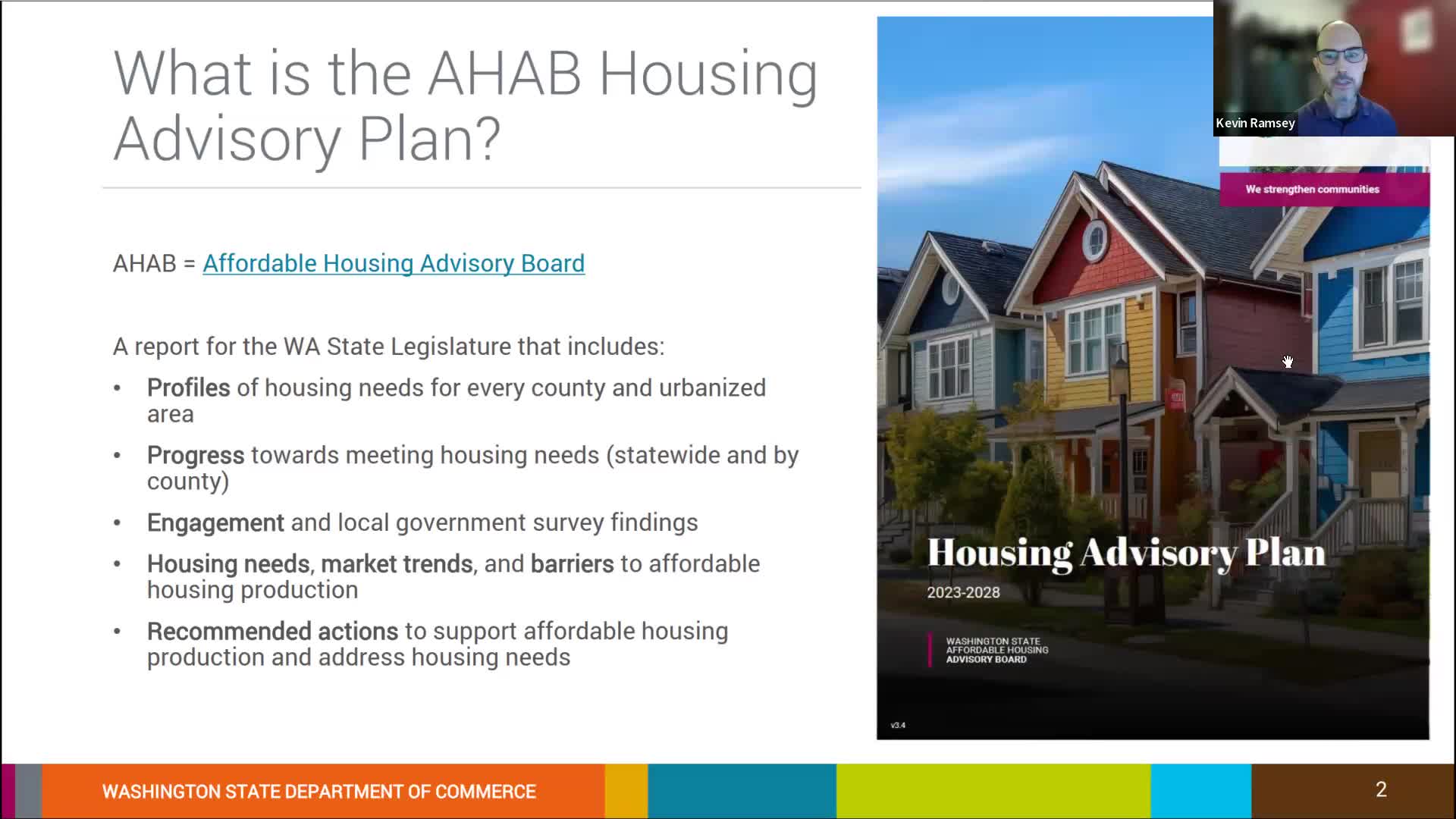Washington State unveils urgent housing needs report
June 04, 2024 | Affordable Housing Advisory Board, Governor's Office - Boards & Commissions, Executive, Washington

This article was created by AI summarizing key points discussed. AI makes mistakes, so for full details and context, please refer to the video of the full meeting. Please report any errors so we can fix them. Report an error »

In a recent report presented to the Washington State Legislature, significant findings regarding the state's housing needs were outlined, emphasizing the urgency of addressing affordable housing challenges. The report, mandated by statute to be prepared every five years, provides comprehensive profiles of housing needs across all counties and urbanized areas in Washington.
Key highlights from the report indicate that by 2044, the state will require over one million new homes, with half of these needed for households earning 50% of the area median income (AMI) or below. This underscores a critical gap in affordable housing availability, as current market conditions often fail to meet these needs.
The report also details engagement findings from local governments and stakeholders, including the Washington Low Income Housing Alliance, which contributed to understanding the diverse housing tools employed across jurisdictions. A significant portion of the report is dedicated to analyzing housing market trends, barriers to affordable housing production, and recommended actions for legislative support.
A dashboard included in the report tracks progress towards four primary goals: reducing housing insecurity, addressing housing disparities, increasing housing production, and enhancing housing affordability. While some indicators show moderate improvement, such as a slight decrease in the percentage of households experiencing cost burdens, the overall picture remains concerning, particularly regarding homelessness rates, which have worsened in many counties.
The report highlights disparities in housing costs, particularly among different racial and ethnic groups, revealing that Black households continue to experience higher cost burdens compared to their white counterparts. Additionally, the report notes a significant increase in multifamily housing production, which is crucial for meeting the needs of lower-income residents.
Each county's profile includes detailed statistics on housing conditions, trends in homelessness, and affordability metrics, providing a localized view of the housing landscape. For instance, Thurston County's profile illustrates the current and projected housing needs across various income levels, emphasizing the necessity for targeted interventions.
As Washington grapples with its housing crisis, this report serves as a critical tool for lawmakers and stakeholders, outlining both the challenges and potential pathways forward to ensure that all residents have access to safe and affordable housing.
Key highlights from the report indicate that by 2044, the state will require over one million new homes, with half of these needed for households earning 50% of the area median income (AMI) or below. This underscores a critical gap in affordable housing availability, as current market conditions often fail to meet these needs.
The report also details engagement findings from local governments and stakeholders, including the Washington Low Income Housing Alliance, which contributed to understanding the diverse housing tools employed across jurisdictions. A significant portion of the report is dedicated to analyzing housing market trends, barriers to affordable housing production, and recommended actions for legislative support.
A dashboard included in the report tracks progress towards four primary goals: reducing housing insecurity, addressing housing disparities, increasing housing production, and enhancing housing affordability. While some indicators show moderate improvement, such as a slight decrease in the percentage of households experiencing cost burdens, the overall picture remains concerning, particularly regarding homelessness rates, which have worsened in many counties.
The report highlights disparities in housing costs, particularly among different racial and ethnic groups, revealing that Black households continue to experience higher cost burdens compared to their white counterparts. Additionally, the report notes a significant increase in multifamily housing production, which is crucial for meeting the needs of lower-income residents.
Each county's profile includes detailed statistics on housing conditions, trends in homelessness, and affordability metrics, providing a localized view of the housing landscape. For instance, Thurston County's profile illustrates the current and projected housing needs across various income levels, emphasizing the necessity for targeted interventions.
As Washington grapples with its housing crisis, this report serves as a critical tool for lawmakers and stakeholders, outlining both the challenges and potential pathways forward to ensure that all residents have access to safe and affordable housing.
View full meeting
This article is based on a recent meeting—watch the full video and explore the complete transcript for deeper insights into the discussion.
View full meeting
